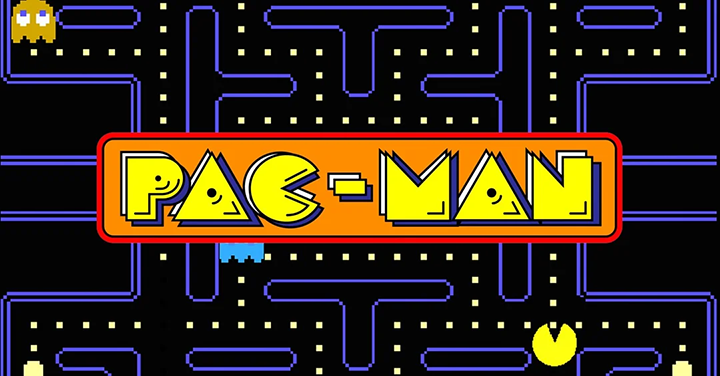Pac-Man: A Deep Dive into the Iconic Yellow Orb
Pac-Man is arguably the most recognizable video game character in history. Here’s a comprehensive look at its history, gameplay, impact, and legacy:
1. History & Development
- Creator: Toru Iwatani, a young game designer at Namco (now Bandai Namco Entertainment).
- Release Date: May 22, 1980, in Japan. It arrived in North America in October 1980.
- Original Japanese Title: Puck-Man (derived from the Japanese onomatopoeia “paku-paku” which describes the sound of the mouth opening and closing). The name was changed to Pac-Man for the US release to avoid vandalism (changing the ‘P’ to an ‘F’).
- Inspiration: Iwatani wanted to create a game that appealed to a wider audience, particularly women, who were largely absent from arcades at the time. He was inspired by the shape of a pizza with a slice missing. He also wanted a game that wasn’t focused on violence, unlike many popular arcade games of the era.
- Development Team: A small team of five people worked on the game.
- Hardware: Ran on Namco’s custom hardware.
2. Gameplay
- Objective: Control Pac-Man through a maze, eating all the Pac-Dots.
- Ghosts: Four ghosts – Blinky (red), Pinky (pink), Inky (cyan), and Clyde (orange) – relentlessly pursue Pac-Man.
- Power Pellets: Located in the corners of the maze, eating a Power Pellet temporarily allows Pac-Man to eat the ghosts, turning them blue and vulnerable.
- Fruit Bonuses: Periodically, fruit appears in the maze, offering bonus points when eaten.
- Warp Tunnels: Located on the sides of the maze, Pac-Man can use these to quickly travel across the screen, but the ghosts can also use them.
- Lives: Pac-Man starts with a limited number of lives. Losing a life occurs when a ghost touches Pac-Man while he’s not powered up.
- Scoring: Points are awarded for eating Pac-Dots, Power Pellets, ghosts, fruit, and completing levels. The goal is to achieve the highest possible score.
- Increasing Difficulty: As the game progresses, the ghosts become faster and more intelligent.
3. The Ghosts – Their Personalities & Behaviors
- Blinky (Red): “Shadow” – Aggressively chases Pac-Man directly. He’s the most predictable and relentless.
- Pinky (Pink): “Speedy” – Tries to ambush Pac-Man by positioning himself four tiles ahead of Pac-Man’s current direction.
- Inky (Cyan): “Bashful” – His behavior is the most complex, influenced by both Blinky’s and Pac-Man’s positions. He’s unpredictable.
- Clyde (Orange): “Pokey” – Alternates between chasing Pac-Man and retreating to the ghost house. He’s the least aggressive.
4. Impact & Legacy
- Massive Commercial Success: Pac-Man became a cultural phenomenon, generating billions of dollars in revenue. It was the arcade game of the early 1980s.
- Cultural Icon: Pac-Man transcended video games and became a symbol of the 1980s, appearing on merchandise, in television shows, and in popular culture.
- Pioneering Game Design: Pac-Man introduced several innovative game design elements:
- Character-Driven Gameplay: Focus on a relatable and charming protagonist.
- Maze Navigation: A unique and engaging gameplay mechanic.
- AI Opponents: The ghosts’ distinct personalities and behaviors created a challenging and dynamic experience.
- Power-Ups: The Power Pellet introduced a strategic element to the gameplay.
- Sequels & Spin-offs: Numerous sequels and spin-offs have been released over the years, including:
- Ms. Pac-Man (1982) – Often considered superior to the original.
- Pac-Land (1984) – A side-scrolling platformer.
- Pac-Mania (1987) – Introduced isometric perspective.
- Pac-Man World (1999) – A 3D platformer.
- Pac-Man Championship Edition (2007) – A fast-paced, visually stunning reimagining.
- Continued Popularity: Pac-Man remains popular today, with new games and adaptations being released regularly. It’s available on virtually every gaming platform.
- Google Doodle: In 2010, Google created a playable Google Doodle celebrating Pac-Man’s 30th anniversary, which was immensely popular.
5. Fun Facts
- The original game’s maze was designed to be symmetrical, but Iwatani intentionally made it slightly asymmetrical to make it more interesting.
- The ghosts were originally intended to be different colors, but the hardware limitations forced Iwatani to use only four colors.
- The game’s music is incredibly iconic and instantly recognizable.
- Pac-Man has a wife and son (Junior) in some spin-off games.
Where to play Pac-Man today
- Arcades: Still found in some classic arcades.
- Online: Many websites offer playable versions of Pac-Man.
- Mobile: Available on iOS and Android.
- Consoles & PC: Included in various retro game collections and available for purchase digitally.
Pac-Man’s enduring appeal lies in its simple yet addictive gameplay, charming characters, and cultural significance. It’s a true classic that continues to entertain generations of players.
Do you have any specific questions about Pac-Man that you’d like me to answer? Perhaps you’re interested in a particular sequel, the game’s music, or its influence on other games?
